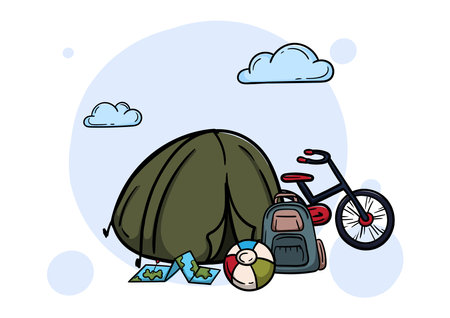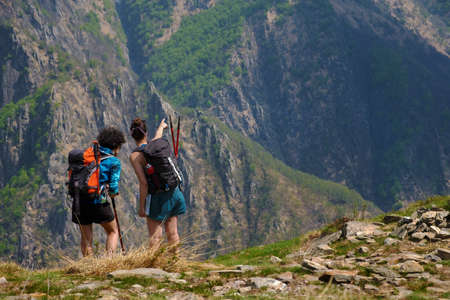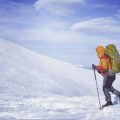1. Understanding Altitude Sickness in the Rockies
Colorado is famous for its breathtaking mountain scenery and high-altitude hiking trails. But before you lace up your boots, it’s important to know about altitude sickness—a real concern when trekking in the Rockies. Altitude sickness, also called acute mountain sickness (AMS), happens when your body struggles to adjust to the lower oxygen levels found at higher elevations.
What Is Altitude Sickness?
Altitude sickness is a set of symptoms that can develop when you quickly go from lower to much higher altitudes, usually above 8,000 feet (about 2,400 meters). The air gets thinner as you climb, which means there’s less oxygen for your body to absorb.
Common Symptoms of Altitude Sickness
| Symptom | Description |
|---|---|
| Headache | A persistent headache that doesnt go away with regular painkillers |
| Nausea or Vomiting | Feeling sick to your stomach or actually throwing up |
| Dizziness | Feeling lightheaded or off balance |
| Fatigue | Unusual tiredness or weakness not related to exertion |
| Trouble Sleeping | Difficulty falling or staying asleep, or waking up frequently during the night |
| Loss of Appetite | No desire to eat, even if you haven’t eaten in a while |
| Shortness of Breath | Breathing faster or feeling out of breath more easily than usual, especially during activity |
Why Is Colorado High-Risk for Altitude Sickness?
The Rocky Mountains in Colorado are home to some of the highest peaks in North America. Many popular hiking and trekking destinations—including places like Breckenridge, Aspen, and Leadville—are located well above 9,000 feet. Even Denver, known as the “Mile High City,” sits at an elevation of 5,280 feet. Visitors coming from sea level or lower altitudes can feel the effects of thinner air within hours of arrival.
The Science Behind It All
Your body needs time to adjust—or “acclimate”—to changes in altitude. When you ascend too quickly, your body doesn’t get enough time to adapt to reduced oxygen levels. This makes hikers and trekkers especially vulnerable if they aren’t used to high elevations like those found across Colorado’s mountains.
2. Preparing for High-Altitude Adventures
Training for the Colorado Mountains
Before you hit the trails in Colorado’s high country, some smart training goes a long way. Getting your body ready can help you avoid altitude sickness and enjoy your trek more. Here are some helpful tips:
- Cardio Workouts: Focus on hiking, running, or cycling to build stamina.
- Leg Strength: Try squats, lunges, and step-ups—mountain trails can be tough!
- Practice with a Backpack: Carry a loaded pack during training hikes to get used to the weight.
- Simulate Altitude (if possible): Some gyms have altitude rooms; if not, try to hike at higher elevations near home before your trip.
Acclimatization: Take It Slow
One of the best ways to prevent altitude sickness is proper acclimatization. Your body needs time to adjust to thinner air at high elevations like those in Colorado. Here’s a simple plan:
| Day | Suggested Activity |
|---|---|
| Day 1 | Arrive in Colorado; stay in Denver or another city below 6,000 feet if possible. |
| Day 2 | Move up to a mountain town (7,000–9,000 feet); take it easy—short walks only. |
| Day 3+ | Begin light hikes; save strenuous treks for after your third night at elevation. |
- Avoid rushing straight from sea level to the highest peaks.
- Hydrate well and skip alcohol for the first few days.
- If you start feeling symptoms (headache, nausea), don’t go higher until they resolve.
Packing Essential Gear for High-Altitude Treks
The right gear helps keep you safe and comfortable at altitude. Here’s what you’ll want in your pack:
| Item | Purpose/Tips |
|---|---|
| Water Bottle & Filter | Staying hydrated is key; mountain streams may need filtering. |
| Sunscreen & Sunglasses | UV rays are stronger at altitude—protect your skin and eyes. |
| Layered Clothing | Mornings can be cold, afternoons warm; dress in layers for comfort. |
| Trekking Poles | Eases strain on legs and helps with balance on rocky trails. |
| High-Energy Snacks | Your body burns more calories at elevation—bring trail mix or bars. |
| First Aid Kit with Altitude Meds* | Pain relievers and any medication prescribed by your doctor (like acetazolamide). |
| Map/Compass or GPS Device | Cell service is spotty—know where you’re going! |
*Talk to your healthcare provider about medications that might help if you’re prone to altitude sickness.

3. Smart Hiking Practices at Elevation
Trekking above 8,000 feet in Colorado can be an unforgettable adventure, but it also brings unique challenges for your body. By following smart hiking practices, you can reduce the risk of altitude sickness and make your journey much more enjoyable.
Pacing Yourself
At higher elevations, the air is thinner and your body gets less oxygen with every breath. Take it slow—there’s no need to rush. Listen to your body and keep a steady, manageable pace. If you feel short of breath, stop for a break or slow down. Many local hikers follow the “rest step” technique: plant one foot firmly before moving the other, giving yourself a mini-break with every stride.
Sample Pacing Guide
| Elevation (ft) | Recommended Pace | Break Frequency |
|---|---|---|
| 8,000–10,000 | Moderate (2 mph) | Every hour: 5 min |
| 10,000–12,000 | Slow (1–1.5 mph) | Every 45 min: 7–10 min |
| 12,000+ | Very Slow (<1 mph) | Every 30 min: 10–15 min |
Hydration is Key
The dry mountain air in Colorado can dehydrate you fast, even if you don’t feel sweaty. Aim to drink water consistently throughout your trek. Don’t wait until you’re thirsty—by then, you may already be dehydrated. Many Coloradans use hydration packs for easy sipping on the go.
Hydration Tips:
- Coffee and alcohol can speed up dehydration—limit these before and during your hike.
- Add electrolytes to your water if you’re trekking all day or sweating heavily.
- Aim for about half a liter (16–17 oz) of water per hour of moderate activity at altitude.
Smart Nutrition Choices
Your body burns more calories at higher altitudes. Pack energy-rich snacks that are easy to eat on the move—think trail mix, jerky, granola bars, or nut butter packets. Eat small amounts often instead of big meals to avoid stomach upset.
Quick Snack Ideas Table:
| Snack Type | Why It Works |
|---|---|
| Trail Mix (nuts & dried fruit) | Packed with energy and easy to digest while walking. |
| Energy Bars/Granola Bars | No prep needed; steady release of carbs and protein. |
| Jerky (beef or turkey) | Sodium helps retain fluids; good protein boost. |
| Fruit Squeeze Packs (applesauce, etc.) | Quick natural sugars for instant energy. |
| Candy or Gummies | Sugar hit if you start feeling sluggish; quick pick-me-up. |
The Importance of Rest
Your body needs time to adjust at elevation. Don’t push yourself too hard—incorporate regular breaks to catch your breath and enjoy the views. If possible, spend a night at a mid-elevation town like Leadville or Estes Park before tackling higher trails. This extra rest helps your body acclimate and lowers your chances of getting altitude sickness.
4. Recognizing and Managing Symptoms on the Trail
Spotting Early Signs of Altitude Sickness
When trekking at high altitudes in Colorado, its essential to know how to recognize altitude sickness early. The sooner you notice symptoms, the easier it is to prevent them from getting worse. Here are some common signs to watch for:
| Early Symptoms | What You Might Feel |
|---|---|
| Headache | A persistent ache, often throbbing |
| Nausea or Loss of Appetite | Feeling queasy or not wanting to eat |
| Dizziness or Lightheadedness | Swaying or feeling unsteady when moving |
| Fatigue or Weakness | Feeling unusually tired or sluggish |
| Trouble Sleeping | Restlessness or waking up often at night |
| Shortness of Breath | Breathing faster or harder than normal, even when resting |
Immediate Steps if Symptoms Appear
If you start noticing any signs of altitude sickness while hiking in Colorado, take these steps right away:
1. Stop and Rest
Find a safe spot off the trail and take a break. Don’t push yourself; rest until symptoms improve.
2. Hydrate and Snack
Drink water and eat an easy snack like trail mix or an energy bar. Dehydration can make symptoms worse.
3. Communicate with Your Group
Tell your hiking partners how you’re feeling. Don’t try to tough it out—altitude sickness can get serious quickly.
4. Descend If Needed
If symptoms don’t improve after resting, it’s safest to move to a lower elevation as soon as possible. Just dropping a few hundred feet can help a lot.
5. Avoid Alcohol and Strenuous Activity
Skip alcoholic drinks and heavy exertion until you feel better. These can both make symptoms worse.
When to Seek Medical Help?
If someone develops severe symptoms—like confusion, trouble walking, chest pain, or shortness of breath at rest—get emergency help right away. Call 911 or use a satellite communicator if you’re in a remote area.
Key Takeaway for Trekkers:
The best way to manage altitude sickness is to act quickly at the first sign of trouble. Listen to your body, stay hydrated, and never hesitate to turn back if you need to.
5. Local Support and Resources for Trekkers
Emergency Contacts You Should Know
If you’re trekking at high altitude in Colorado, it’s important to be prepared for emergencies. Here are some key numbers and resources you should save before heading out:
| Service | Contact Number | Description |
|---|---|---|
| 911 | 911 | For all emergencies (police, fire, medical) |
| Colorado Search and Rescue (SAR) | Varies by county, check local SAR info | Professional teams for backcountry rescue |
| Poison Control Center | 1-800-222-1222 | Advice on exposure to harmful plants or substances |
| Non-Emergency Police | (varies by city/county) | For non-life-threatening issues needing police assistance |
Local Medical Services Near Major Trailheads
If you experience symptoms of altitude sickness, seek medical help right away. Here are some clinics and hospitals near popular hiking areas in Colorado:
| Location/Area | Medical Facility Name | Phone Number | Notes |
|---|---|---|---|
| Boulder/Front Range | Boulder Community Health ER | (303) 415-7000 | Full emergency services, close to many trailheads |
| Aspen/Maroon Bells Area | Aspen Valley Hospital ER | (970) 544-1200 | 24-hour care for mountain trekkers and skiers |
| Leadville/Mount Elbert Area | St. Vincent Health ER (Leadville) | (719) 486-0230 | Altitude-related illness experience in the Rockies region |
| Pikes Peak/Colorado Springs Area | Pikes Peak Regional Hospital ER (Woodland Park) | (719) 687-9999 | Covers treks around Pikes Peak and Rampart Range |
| Estes Park/Rocky Mountain National Park | Estes Park Health ER | (970) 586-2317 | Main hospital for RMNP visitors |
Colorado-Based Outdoor Safety Organizations & Resources
- CORSAR Card Program: The Colorado Outdoor Recreation Search and Rescue (CORSAR) card helps fund search and rescue operations across the state. While it’s not insurance, carrying a CORSAR card supports local SAR teams. More info: Get your CORSAR card here.
- Colorado Fourteeners Initiative (CFI): This nonprofit focuses on preserving Colorado’s highest peaks and offers safety tips for high-altitude hikers. Visit 14ers.org.
- The Colorado Mountain Club (CMC): The CMC provides classes, guided hikes, avalanche training, and up-to-date trail conditions. Check out cmc.org.
Tips for Getting Local Help Fast
- If you have cell service, call 911 first—they’ll connect you to the closest emergency response team.
- If you’re going remote, tell a friend or family member your route and expected return time.
- Certain trailheads have emergency call boxes—know their locations before you start your trek.
Your Safety Net: Stay Informed and Prepared
Trekking at high altitude in Colorado is amazing but comes with risks. Keeping these contacts handy and knowing about local organizations can make your adventure safer and give you peace of mind while exploring the Rockies.


